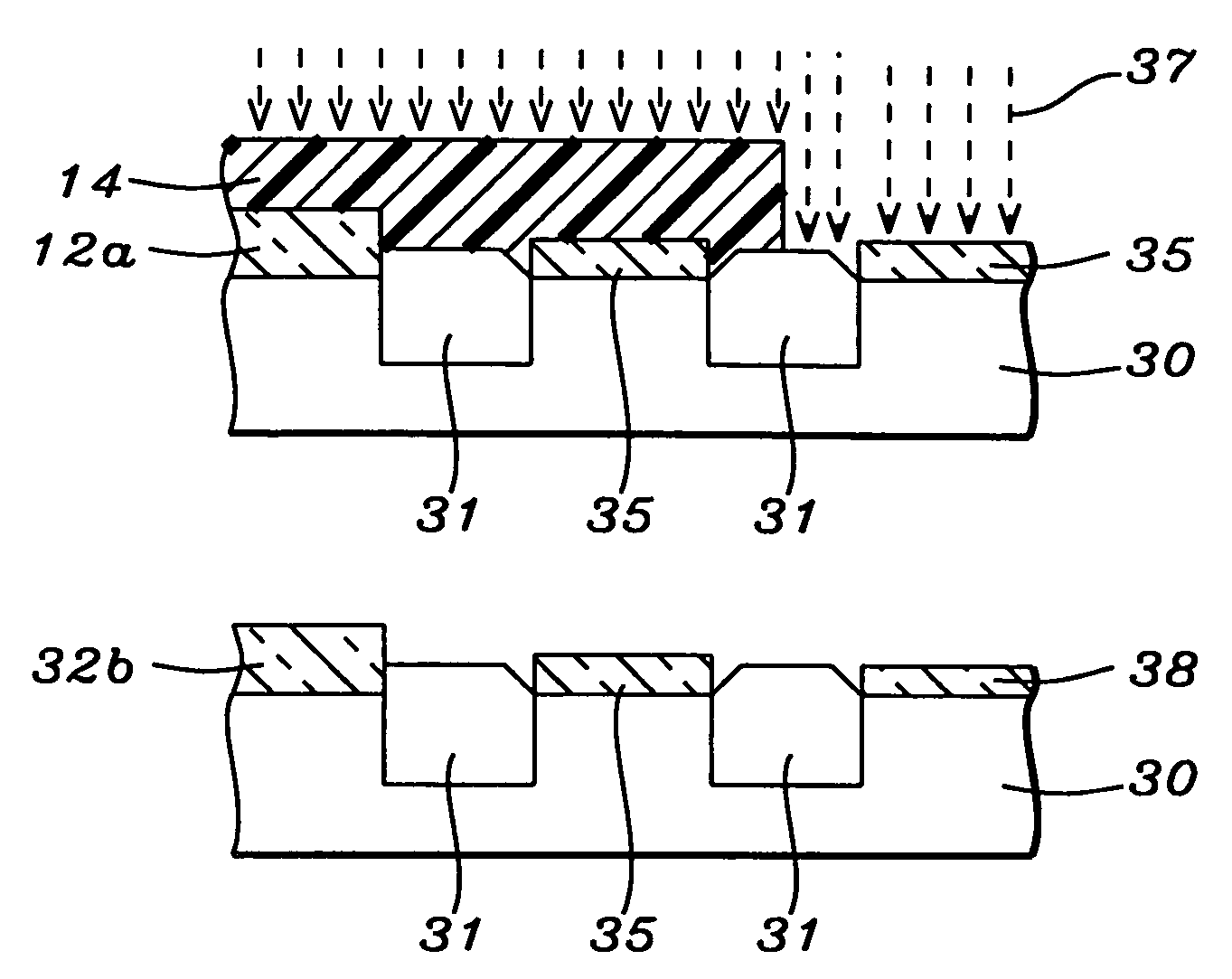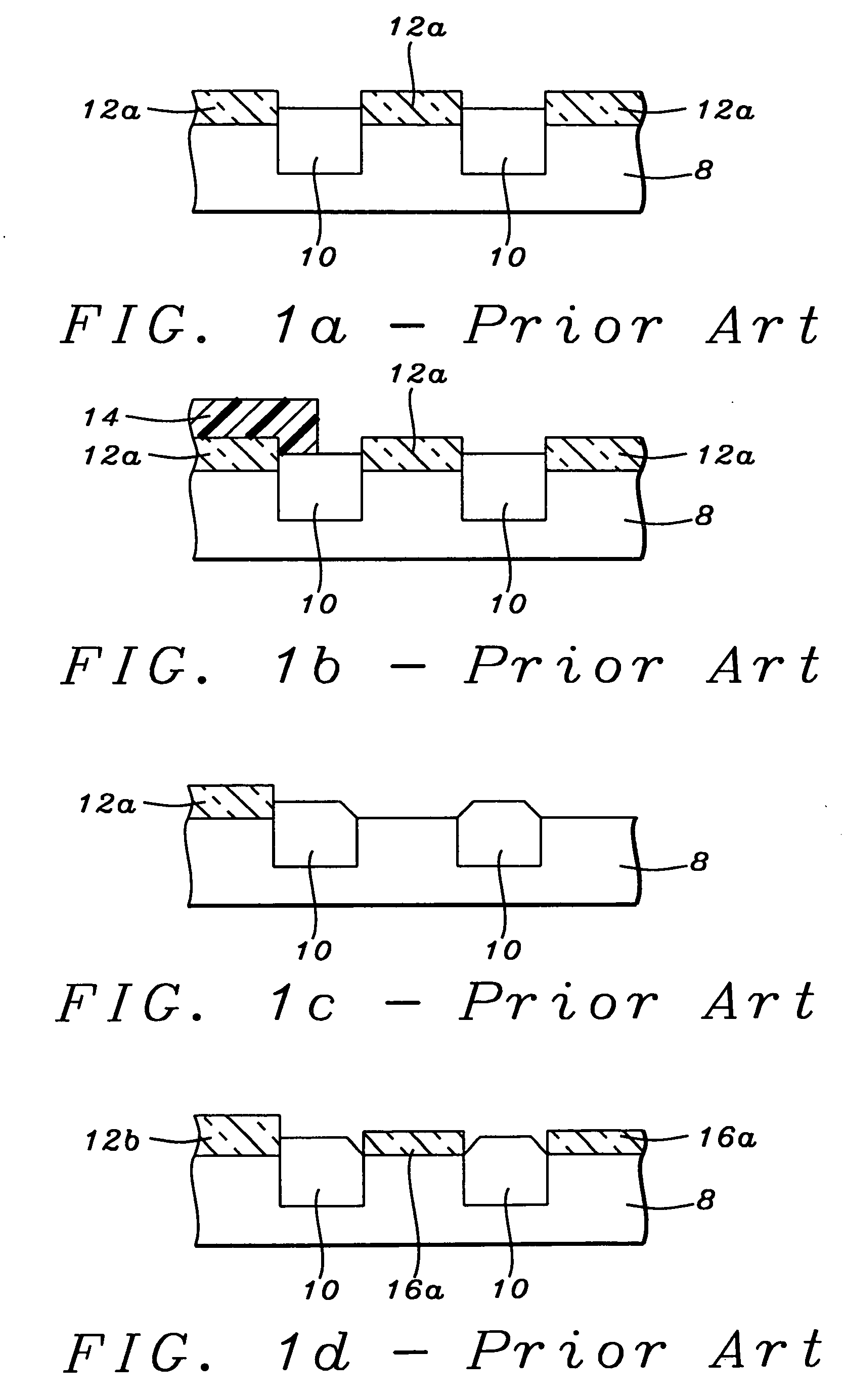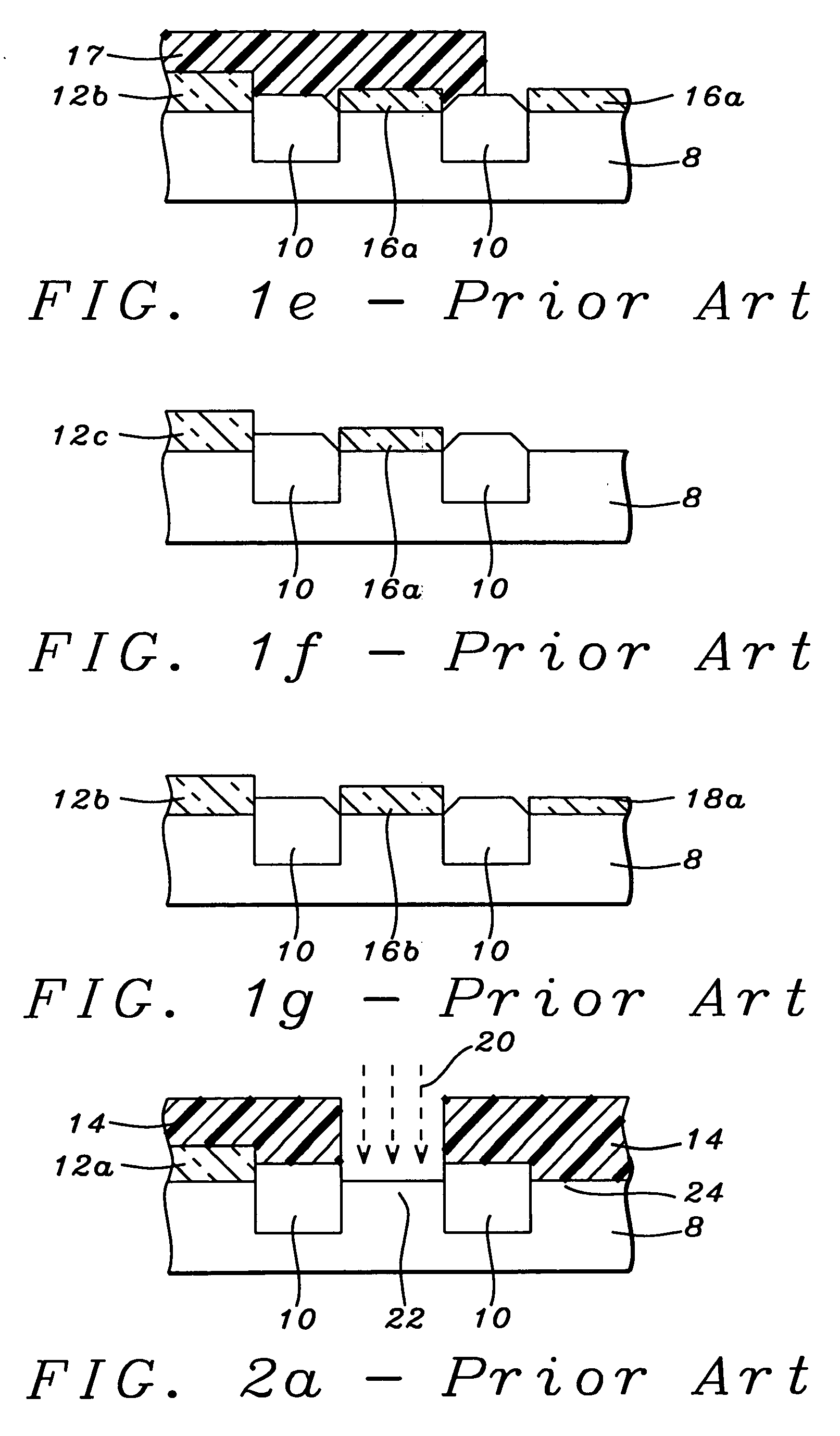Method of generating multiple oxides by plasma nitridation on oxide
a plasma nitridation and oxide technology, applied in the direction of semiconductor devices, electrical equipment, basic electric elements, etc., can solve the problems of large standby power consumption, low production efficiency, and low efficiency of products with these devices, so as to reduce leakage current, minimize corner rounding, and reduce the effect of little or no effect on the integrity of the sti region
- Summary
- Abstract
- Description
- Claims
- Application Information
AI Technical Summary
Benefits of technology
Problems solved by technology
Method used
Image
Examples
second embodiment
[0046]In a second embodiment, the present invention is a method of forming four different gate oxide thicknesses on a substrate which is useful in fabricating semiconductor devices that have several functions or systems on a chip (SOC) wherein different types of circuits requiring different gate oxide thicknesses are needed. This embodiment is represented in FIGS. 4a–4d. First, a substrate 40 is provided which contains STI regions 41 that separate active areas where circuits will be formed. A first growth oxide layer 42a is grown to a thickness of about 50 Angstroms preferably in an oxidation furnace with a dry oxygen ambient at a temperature of 600° C. to 800° C. for a period of 20 minutes as in the previous embodiment. A photoresist layer 43 is then patterned to selectively expose portions of oxide layer 42a that will be removed and replaced with an oxide layer having a lower EOT than oxide 42a.
first embodiment
[0047]Referring to FIG. 4b, the exposed oxide regions 42a are etched away in dilute HF as described previously. Comers of STI regions 41 exposed to the etchant can become rounded during the treatment. Photoresist 43 is removed with a liquid stripper and substrate 40 is cleaned with SC-1 and SC-2 solutions as mentioned in the An annealing step may be performed here to remove moisture and contaminants and to density any native oxide growth that can occur on substrate 40 after the strip process. A second oxide layer 44 about 20 Angstroms thick is then grown on substrate 40 in regions where oxide layer 42a was previously removed. In regions where oxide 42a remains in FIG. 4a, the second oxide growth adds slightly to the thickness to give oxide layer 42b about 55 to 60 Angstroms thick.
[0048]Referring to FIG. 4c, a photoresist layer 45 is patterned to expose selected oxide layers 42b, 44 while covering other oxide layers 42b, 44. A nitridation 46 with nitrogen plasma as described in the ...
third embodiment
[0051]In a third embodiment, the etch back step described for FIGS. 4a–4b is shortened to 10 seconds and a regrowth of oxide is omitted. Exposed oxide layer 42a in FIG. 4a is selectively etched by dilute HF as before but the etch time is shortened to 10 seconds so that exposed oxide layer 42a is thinned to about 20 Angstroms thick to form oxide layer 50 in FIG. 5a. As a result there is little or no corner rounding of STI features 41 adjacent to oxide layer 50 during the etch process. Oxide layer 42a remains 50 Angstroms thick.
[0052]Photoresist 43 is removed and substrate 40 is cleaned by conventional methods. Referring to FIG. 5b, a photoresist 51 is patterned to selectively expose oxide layers 42a, 50 and to cover other selected layers 42a, 50. A nitridation 52 is then performed as described in the first embodiment. Oxide layers 42a, 50 that are not protected by photoresist 51 are nitridated to form layers 53, 54, respectively.
[0053]Referring to FIG. 5c, nitridated oxide layer 53 i...
PUM
 Login to View More
Login to View More Abstract
Description
Claims
Application Information
 Login to View More
Login to View More - R&D
- Intellectual Property
- Life Sciences
- Materials
- Tech Scout
- Unparalleled Data Quality
- Higher Quality Content
- 60% Fewer Hallucinations
Browse by: Latest US Patents, China's latest patents, Technical Efficacy Thesaurus, Application Domain, Technology Topic, Popular Technical Reports.
© 2025 PatSnap. All rights reserved.Legal|Privacy policy|Modern Slavery Act Transparency Statement|Sitemap|About US| Contact US: help@patsnap.com



